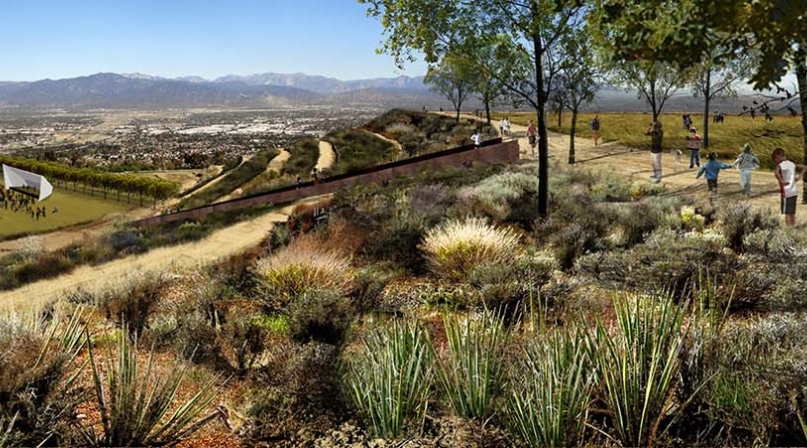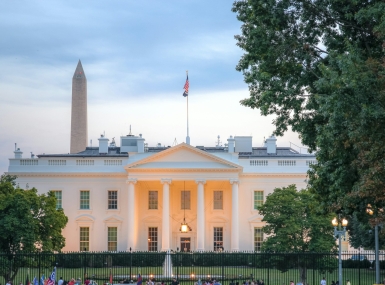Problem:
|
A 1,365-acre landfill is located in a community that lacks parks and recreational space.
|
Solution:
|
Create a plan that transforms a landfill into a park.
|
When some see a problem, others see an opportunity.
That’s how the Department of Parks and Recreation in Los Angeles County, Calif., viewed the Puente Hills Landfill when it ceased operations in 2013 and they were left with one of the country’s largest former landfills rising above the San Gabriel Valley.
The department envisioned converting the landfill into usable, open space for the community, leading to the creation of the Puente Hills Landfill Master Plan.
The landfill, which has collected 130 million tons of trash over 57 years and encompasses 1,365 acres, was permitted with the understanding that upon its closure, portions of the landfill would be transformed into usable park space.
The Puente Hills Master Plan, led by the Department of Parks and Recreation, will allow the department to reclaim the landfill and establish a new regional park in Los Angeles County for the first time in 30 years.
Alina Bokde, deputy director for the planning and development agency within the department of parks and recreation, said the plan for the park was a commitment made to the community.
“The community would then benefit from the development of a park that would obviously serve the benefit of the local residents nearby that had for many years had to deal with the impact of the second largest landfill in the country,” she said.
Michelle O’Connor, the departmental facilities planner for the planning and development agency for the department of parks and recreation, oversees the trails program and was a principle planner involved in the development of the Puente Hills Master Plan. She said the landfill was split into three areas available for recreation: the western deck, eastern deck and southern deck. The project will be implemented in three major phases over the next 30 years to reflect the settlement of the landfill that occurs over time.
The first phase will occur primarily on the western deck in areas that can support infrastructure and will create an entry plaza and visitor center, a maintenance and operations area and an ADA-accessible trail that leads to a scenic overlook.
O’Connor added that there will be a bike skills park, a large area for performances and events with a removable band shell and a children’s play area.
This phase will connect the top areas of the landfill to the base with plans to construct a trail lift, similar to a gondola, to transport visitors from the base of the landfill to the top, she said.
The first phase is estimated to cost $96 million.
“It’s about really taking a former landfill and postindustrial site and converting it into recreational space,” O’Connor said. “Just the mindfulness, the thoughtfulness that went into the conceptual planning for the project and trying to design elements that are really sensitive to the fact that it is on a landfill instead of trying to ignore that.”
With expected settlement of the landfill up to 125 feet in the next 30 years, the phases in the master plan are adaptable and designed to build upon the previous phase.
“We have to be really careful with the type of facilities that we build on top of surfaces that could be responsive to that shifting and settling,” O’Connor said. “Other areas are going to be by and large passive areas.”
The plan depicts a “Park for All” with recreational activities for a diverse audience. The department conducted an extensive outreach effort when establishing the plan for the park which included six community workshops in four languages, interactive booths at 31 community events and schools, hiking tours of the landfill, numerous presentations to members of the community and a project website where information informed county residents who couldn’t attend meetings.
“It was really important that the community be at the forefront in determining how the space would be developed for parks within the constraints of a landfill,” Bokde said.
The biggest challenge with the Puente Hills master plan has been with funding, according to Bokde.
“All the other pieces have come together,” she said. “I would say the cost of building parks is expensive and it’s a regional park so it’s a significant project.”
The master plan will meet an important need in the community by providing recreational spaces in an area where there is a lack of parks, Bokde added.
“I would say this is not something that happens every day. …Transforming one land use to another is what is unique about this project and exciting,” Bokde said.
The department is currently seeking funding to build the first phase of the park.
“I think it’s really well situated to serve as a great destination park,” O’Connor said.
The Puente Hills Landfill Park Master Plan is the recipient of a 2019 NACo Achievement Award in the Planning category.




